It was an eventful night.
What was supposed to be a straightforward two-hour flight from Nashville to Minneapolis turned into multiple delays, cancelled flights, missed connections, and ultimately resulted in an unexpected overnight and crack of dawn flight home the next day. Needless to say, I was not a happy camper.
Looking back at that night, I can honestly say I was not at my best and I am not proud of that. I was a stressed, exhausted, frustrated momma bear who just really wanted to get home to her kiddos.
My frustration stemmed from conflicting messages, multiple people talking to me at the same time, and also people saying things like “Well they shouldn’t have told you that, I’ll transfer you to someone so that you can have them written up.” As a frustrated customer I kept thinking “Nope, that’s not my job and I don’t care if someone needs to be written up, I need you to help me fix my problem.”
The next morning, as I boarded my rescheduled 6 a.m. flight home, I was reflecting on how similar this is to the care we provide to patients and families each day. Think about it – if I had gotten home as planned with no drama, we wouldn’t even be talking about this! Just as I take for granted that the airlines will safely get me home on time, our patients and families expect us to provide high quality care and service; that’s their baseline. When things don’t go well, they tell more people than when they have a good experience. A recent study by Dimensional Research looked at customer service both good and bad and found that 95% of those who have had a bad experience said they told someone about it, compared to 87% who shared a good experience. Those who suffered a bad interaction were 50% more likely to share it on social media than those who had good experiences (45% vs. 30%) and 52% more likely to share it on an online review site such as Yelp (35% vs. 23%). [1]
Just like me that evening in the airport in Nashville, our patients and families are not always at their best. They are stressed, frustrated, exhausted, and want nothing more than to get home to their family. This is never truer than when they come to the Emergency Department (ED) for care. Nine times out of ten this was not on their radar for this morning, this afternoon, or even at 11:30 this evening. They had other places that they needed and wanted to be at that moment. In addition to the normal concerns that patients and families have when they go to the hospital or a clinic for care, there is another layer – an emotional one – when they come to the ED. This emotion stems from a sudden, unplanned, or unexpected experience. Each year this is happening for more than 136.3 million Americans with 11.9% of those visits resulting in a hospital admission. [2]
I was working with an interdisciplinary team of ED staff and we asked them to describe what makes the ED unique. They shared a bunch of words and great ideas but the essence that it all boiled down to was this: an unexpected contact with a healthcare provider. That idea of an Unexpected Experience is truly what sets this portion of a patient’s journey apart from other elements of the healthcare continuum.
In this series we’ll take a look at various aspects of patients’ and families’ unexpected experiences in the Emergency Department. We’ll talk about: the upcoming requirements for surveys and public reporting, why this department is so important to the hospital and the healthcare system, what’s most important to patients and families, what the department as well as what staff and physicians individually can do to help make it a better experience, and share some success stories from high performers.
[1] “Customer Service and Business Results: A Survey of Customer Service from Mid-Size Companies,” (Dimensional Research, 2013), http://cdn.zendesk.com/resources/whitepapers/Zendesk_WP_Customer_Service_and_Business_Results.pdf.
[2] CDC/National Center for Health Statistics, Emergency Department Visits, http://www.cdc.gov/nchs/fastats/emergency-department.htm.
